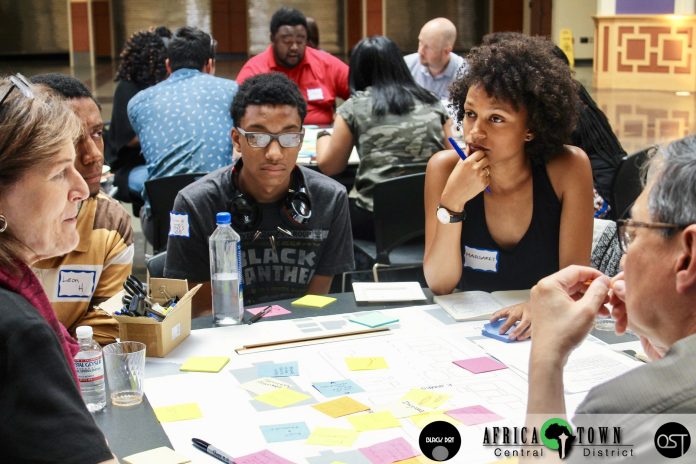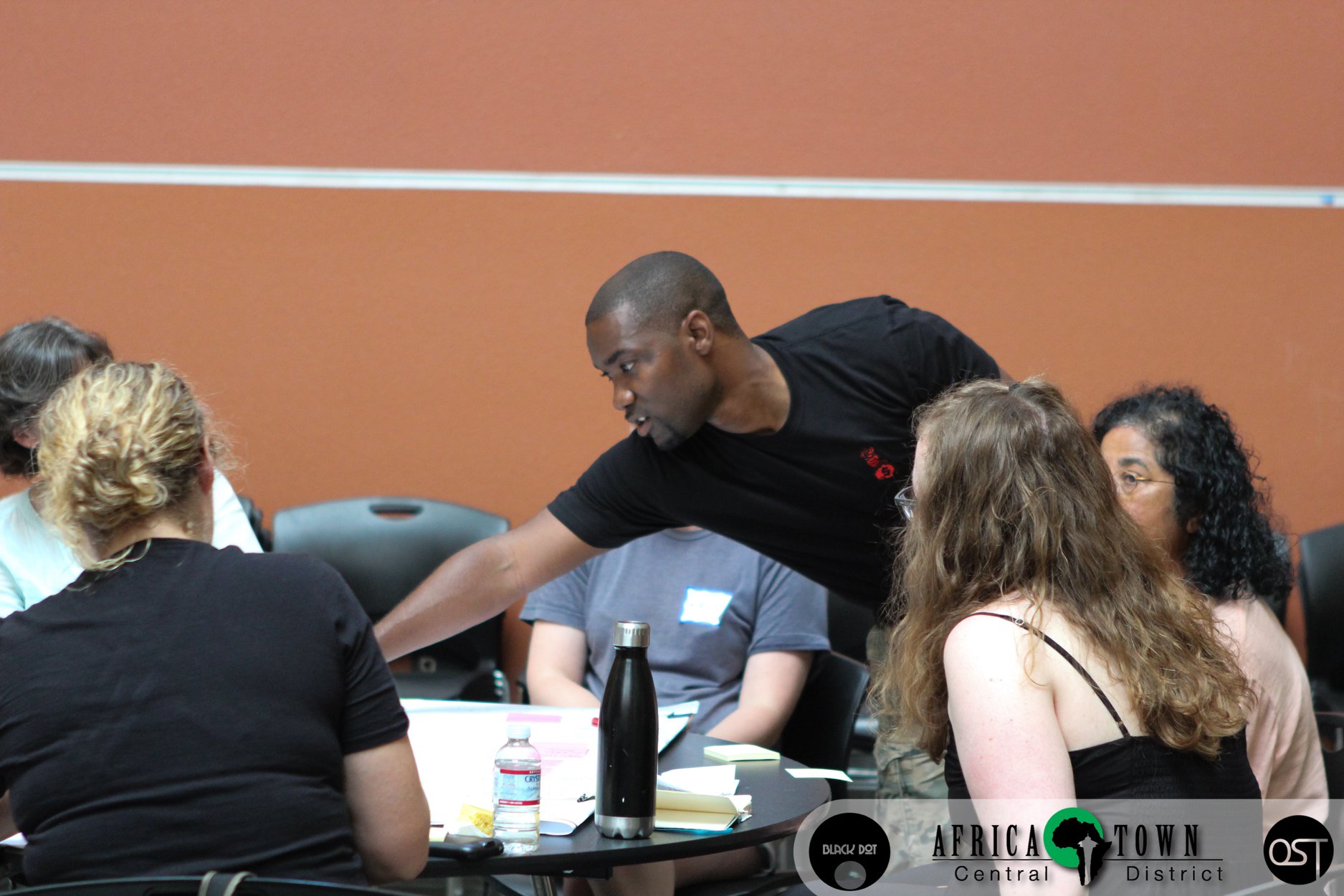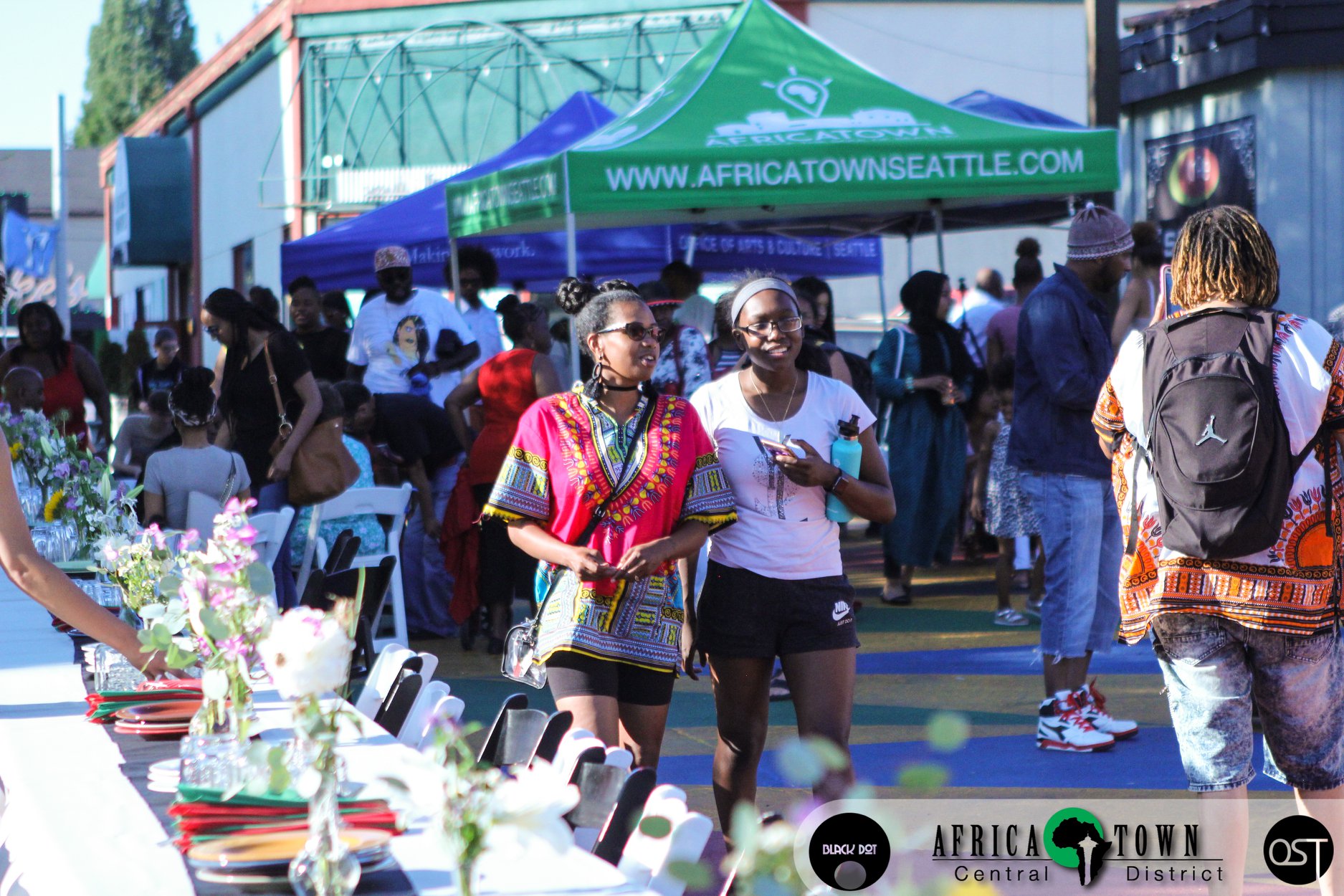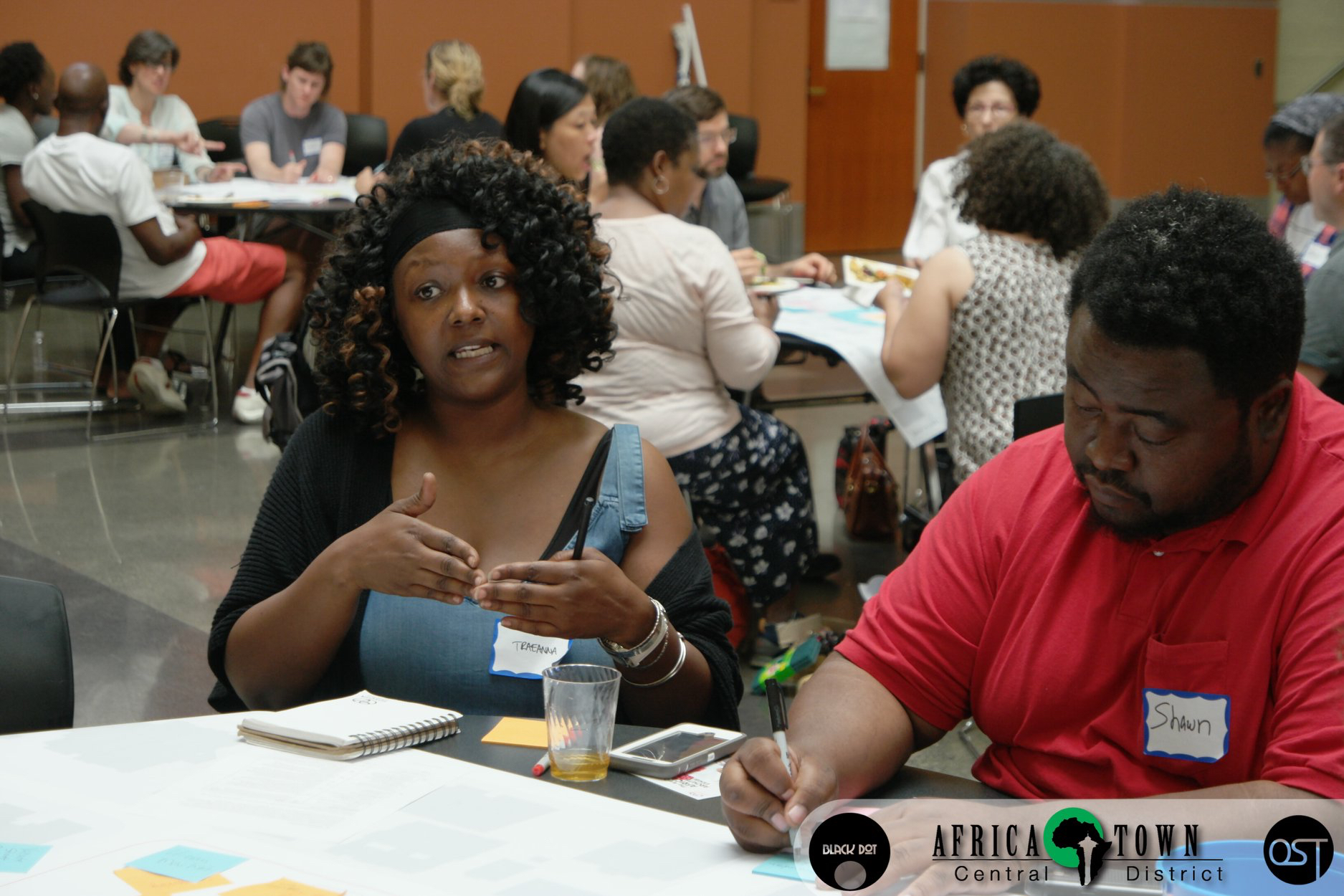
This is the second part of a two-part series. The first part is here.
When we live in an environment which is dominated by ideas and actions that are contrary to our well-being, then we have to design spaces and places that are conducive to and promote our well-being. —Wyking Garrett, President of Africatown Community Land Trust, Africatown Design Town Hall, 2018
Drawing on Technical Assistance
A critical part of Africatown’s strategy is to “bring brilliant people from our diaspora into our community to inspire and give us more ways to go about creating the future we want,” Wyking Garrett said.
As part of this mission, Garrett traveled to Harvard University, where he shared his vision for Africatown with a group of distinguished design professionals. It was through this presentation that Nmadili Okwumabua first became acquainted with Africatown.
“I reached out [to Garrett] and he was like Nmadili, I’ve already heard of you. Let’s connect,” Okwumabua said.
The result was quite literally a convergence of two visionaries. Just as Garrett’s work seeks to redefine the design process, Okwumabua’s work at CDPI Africa centers on the ambitious vision of foregrounding the influence of African architecture, planning, and design on an international scale.

Frustrated in design school by a lack of recognition of the contributions of African culture and aesthetics, Okwumabua chose to pursue a different path. “Architecture is a reflection of a culture’s aesthetics, experience, and identity, but not for Africa. I left design school for that reason. It just didn’t make sense,” Okwumabua said.
Inspired by Professor David Hugh’s seminal publication Afrocentric architecture: a design primer, Okwumabua chose to study African history and the contributions African cultures have made to design. After recognizing that the lack of interest in African architecture and design stemmed from a scarcity of customers requesting African concepts, Okwumabua made a radical choice.
“I decided that I would become the client. I would create CPDI Africa, which asks architects to create these new languages and modern translations of African architecture,” Okwumabua said.
The result was the creation of the CPDI Africa Competition, which has been a huge success.
“Architects loved the idea and responded from around the world,” Okwumabua said. Past winners and finalists have come from across the African continent and diaspora, but also from countries such Vietnam.
Okwumabua’s presentation at the Imagine Africatown Design Town Hall featured compelling images of the architects’ renderings. These designs have also attracted the attention of clients.
“When architects shared their work the audience became excited. Potential clients said, ‘This is beautiful. How can we get one of these?’ My friends, partners, and colleagues saw we were on to something they also believed in,” Okwumabua said.
CPDI Africa’s work also entails curating an online library of African architecture and design with the intention of creating a resource for architects, planners, and designers across the world. An exhibit called the “Art of African Architecture” has been touring the country. The current plan is for the exhibit to come to Seattle next winter and to be shown in partnership with Africatown.
However, this is not the only future connection envisioned for CPDI Africa and Africatown.
“Africatown is really pioneering what CPDI Africa is doing,” Okwumabua said. “Let’s make a conscious decision to reach back and pick up from where we left off as a people. Pick up elements and fast track to the future.”
With that goal, CPDI Africa is committed to offering technical assistance to Africatown. “We are looking forward to bringing in architects from around the world and getting their input,” Okwumabua said. “There’s a lot to learn from their research and expertise.”
It will be interesting to observe how the cross-pollination between Africatown and CPDI Africa develops overtime.
“We are definitely there for the community,” Okwumabua said. “I wish I could move to Seattle right now. We want to bring everything we do to the table. This is what we are passionate about.”
Imagination and Provocation
Local design professionals are also offering up their expertise in the service of Africatown’s vision. “Coming Soon” an interactive public art project dreamed up by Zewde as an opportunity to provoke the community into action, has made a presence on sites throughout the CD.
“As I was attending community meetings, Wyking [Garrett] would always ask people, ‘What is your vision of Africatown?’” Sara Zewde said. “People had these very vivid descriptions. Everybody was talking about the same place. It was like a parallel universe that doesn’t exist.”
Peoples’ visions were compiled by Garrett into an excel spreadsheet, which Zewde shared with friends from the design community. The community input was used to generate a series of playful, provocative, and surreal re-imaginings of sites in the CD such as Pratt and Blanche Lavizzo parks.
Billboards were placed on-site that mimic developers’ signs; however, instead of presenting information on proposed developments, the billboards “showcase an Afro-utopia,” Zewde said. “The website continues the fiction.”
Community members are encouraged to pick up the postcards mounted on the billboards, draw on them their visions for Africatown, and mail them to the address provided.
“The project will live on through the postcards we are distributing,” Cox said. “Hopefully we will collect many of those and it be a corollary to that project.”
Re’Union on Union
Though the potential impact of Africatown could spread well beyond Seattle’s borders, its largest presence is still found on the corner of 23rd and Union, where the parking lot, painted in vibrant colors highlighting African aesthetics, and a large “Africatown” sign attract the attention of residents and visitors alike.
The paint, which serves as an activation of the public space, was completed by a team of 300 community volunteers. “It was definitely a highlight,” Zewde said. “We had grandparents and grandchildren volunteering together.”

The painting took place the weekend before the Imagine Africatown Design Weekend and served as the kick-off to the event for the community. The following Saturday night, July 14th, the community once again gathered at the corner to celebrate the event’s closing with an outdoor dinner.
“Not only was it just a community dinner, it was a reunion,” said Malaysia Marshall, who organized the event with Curtiss Calhoun. “An opportunity for those to reflect on the past, present, and future state of their community, their neighborhood, the Central District. People just want to be involved and included, especially in the planning and sustainability of a space that nurtured their upbringing and still holds valuable memories.”
The 3D models created at the design cipher earlier that day were displayed, and participants strolled over to observe the models and discuss their own ideas for Africatown’s future, while enjoying the wide variety of food and beverages shared at the potluck.
TraeAnna Holiday is local filmmaker who has spent nearly a year gathering footage for a documentary on the CD, which she plans to release next year. Her family was displaced in 2003 as a result of gentrification. “It’s so funny,” Holiday said, “I was driving around the CD today, and I thought, man, as a child, we didn’t know how good we had it.”
In the CD of Holiday’s childhood, neighbors were connected to their neighbors.
“We knew our neighbors. We knew the storeowners. They knew us and they knew our grandparents and parents. The connectivity of community is what’s lost. I don’t care if its all black folks or whatever. But what happened was, when white folks started move into the community they built walls up. They didn’t want to get to know their neighbors. That broke down the sense of community almost immediately,” Holiday said.

Holiday’s vision of Africatown is a return to the interconnectivity of the past. “I think that some of the work that we did today [at the design cipher] speaks to that,” she said. “Open public spaces. Open amphitheaters. Things that are affordable for people to utilize as resources.”
On this rare warm summer night, Africatown’s vision has come to life. A diverse of group community members, ranging from longtime residents to new arrivals, sit together a long series of tables covered by white tablecloths and bouquets of flowers. A DJ spins music from under a green tent decorated with the Africatown logo, while grandparents take the hands of their grandchildren and dance.
Garrett, pausing the music for a moment, takes the microphone into his hands. “We have been here since 1882,” he says, referencing the black pioneer William Grose, who lived and owned land along Madison Street, “and we will be here for at least another eighty years.”
The crowd cheers.
At a moment of what might be unprecedented change in Seattle, this is a bold proclamation to make, but it also one that is backed up by Garrett’s rigorous and proactive approach.
This is a truly a community centered design approach that everyone who cares about Seattle’s future should be paying close attention to.
Community Resident Preference Policy and the Fight Against Displacement in Seattle
Natalie Bicknell Argerious (she/her) is a reporter and podcast host at The Urbanist. She previously served as managing editor. A passionate urban explorer since childhood, she loves learning how to make cities more inclusive, vibrant, and environmentally resilient. You can often find her wandering around Seattle's Central District and Capitol Hill with her dogs and cat. Email her at natalie [at] theurbanist [dot] org.

